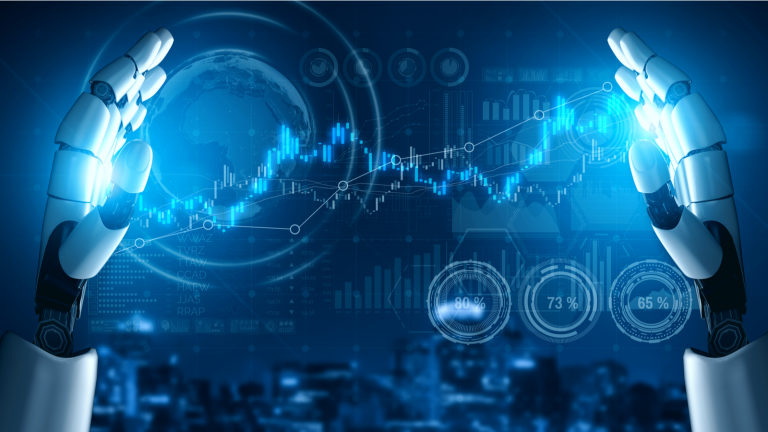Last Friday, Tesla (TSLA) unveiled its humanoid Optimus robot during its annual AI Day presentation.
The robot itself – which looks eerily similar to the bots in iRobot – didn’t do much. It took a few steps, waved to the crowd, pulled off a dance move. And that was that. Most folks were disappointed with the presentation. They were expecting more.

Yet, while the presentation underwhelmed, it does signify a landmark shift to a new era – a shift to the Robotic Revolution.
The Robots Have Arrived
At the risk of sounding ominous, let me state that Optimus is not alone.
That robot is not an isolated example. It’s a microcosm of a much bigger trend.
Did you know that, right this very moment, there are robots flipping burgers at fast food chains in California? Or that robots are delivering pizzas in Houston, mowing lawns in Alabama, and waiting tables all across America? Did you know robots are packing and unpacking items at Walmart (WMT) and Amazon (AMZN) distribution centers? Indeed, robots are now even filling prescriptions at Walgreens.
Robots are also making pizza, prepping smoothies, brewing coffee, picking strawberries, planting crops, vacuuming and mopping homes…
There are robots everywhere. You may not see them. But they are quietly becoming a driving force of the U.S. economy.
Soon enough, they’ll become its backbone.
An Inevitable Trend
The Robotics Revolution was always inevitable.
We humans like to think of ourselves as special and unique. But research supports the notion that over 90% of everything we do is predictable. And can be replicated by data-driven models.
Data-driven models operate robots. Therefore, theoretically, robots should be able to do about 90% of what humans do – more efficiently and at a lower cost.
After all, a robotic server doesn’t need to take breaks. A robotic packager can package all night at a warehouse without fatigue. And a robotic burger-flipper can always cook the same burger to the perfect temperature every single time – without requiring a wage to do so!
In 90% of tasks, robots are the more-efficient, less-costly choice for labor.
Still, humans have retained labor force dominance because robots have suffered from software and hardware limitations.
Those limitations are now quickly eroding. For most manual-labor tasks these days, some company has created some robot prototype to complete that task. Now, it’s plain to see we still have a long way to go before we have an iRobot-like cyborg – just watch Optimus’ demo!
But it’s advancing to a point where robots are now ready to majorly impact the U.S. economy.
The Need Is Urgent
The big misconception about robots and labor automation technologies is that they are “job killers.” As it turns out, though, they’re actually “job fillers.”
Think about the world we live in right now.
It’s not one of labor excesses. It’s one defined by labor shortages. The volume of work companies need to get done has been and will likely continue outpacing the labor supply that’s ready and willing to do it.
That’s the work that the robots are doing these days. They aren’t stealing jobs. They’re plugging into the empty roles that companies have had trouble filling for years!
In that sense, the Robotics Revolution isn’t about labor replacement – it’s about labor addition. And labor addition is going to prove extremely valuable in the long run…
Because here’s the bigger problem, folks: declining birth rates.
The U.S. net birth rate has been collapsing in recent years. That’s mostly because younger generations have, for a variety of reasons, shunned having kids. The result? In 10 to 20 years, the labor force will be a lot smaller than what it is today.
If we don’t fill that gap, the U.S. economy could collapse.
The Final Word on Robots
But there is a solution – robots. They’ll fill that gap, and they’ll sustain the U.S. economy over the next 10, 20, even 30-plus years.
They are the future – a future we need. And it’s a future that starts now.
Indeed, the Robotics Revolution has arrived.
We believe this will be one of the – if not the single most – lucrative investment megatrends of the 2020s.
And we know the best stock in the entire market to play the Robo Revolution.
Plug into the future of labor.
On the date of publication, Luke Lango did not have (either directly or indirectly) any positions in the securities mentioned in this article.

